The Markhor: An Overview
The markhor (Capra falconeri) / ˈ m ɑːr k ɔːr /, also known as the screw-horn or screw horn goat, is a large species of wild goat that makes its home in the breathtaking, rugged landscapes of South Asia and Central Asia. Their range stretches through the countries of Pakistan, India, Afghanistan, and Tajikistan, and they are a prominent inhabitant of the formidable Karakoram and Himalayan mountain ranges. Recognized for their impressive, spiraling horns, which can reach lengths of up to 160 centimeters (63 inches) in males, markhors are sexually dimorphic, with females possessing shorter horns, measuring up to 25 centimeters (9.8 inches).
The markhor holds the esteemed title of being the national animal of Pakistan, where it is a source of immense pride and cultural significance. The International Union for Conservation of Nature (IUCN) has classified the markhor as Near Threatened, reflecting the ongoing conservation concerns surrounding their populations. Despite their impressive size and strength, markhors face significant threats, primarily from habitat loss and degradation due to deforestation, as well as the persistent pressure of illegal hunting. These magnificent creatures play a vital role in maintaining the ecological balance of their high-altitude ecosystems, highlighting the importance of dedicated conservation efforts to ensure their long-term survival.
Physical Characteristics and Subspecies
The markhor is a sight to behold, instantly recognizable by its most prominent feature: its magnificent, spiraling horns. These horns, present in both males and females, are a testament to the species’ unique beauty and distinguish it within the realm of wild goats. In males, these helical horns can reach an impressive length of up to 160 centimeters (63 inches), curving majestically upwards in a manner reminiscent of a corkscrew. Females, while also possessing these striking horns, exhibit a shorter variation, reaching up to 25 centimeters (9.8 inches) in length.
Beyond their remarkable horns, markhors possess a sturdy build, reflective of their life navigating the challenging terrain of their high-altitude homes. Their coat, exhibiting variations in color from tan to a lighter shade in males, provides essential camouflage against the rocky slopes and sparse vegetation of their environment. A distinctive feature of the markhor is the long, shaggy, white fur adorning their necks and chests. This fur, flowing luxuriously, adds an air of majesty to their appearance, particularly in males.
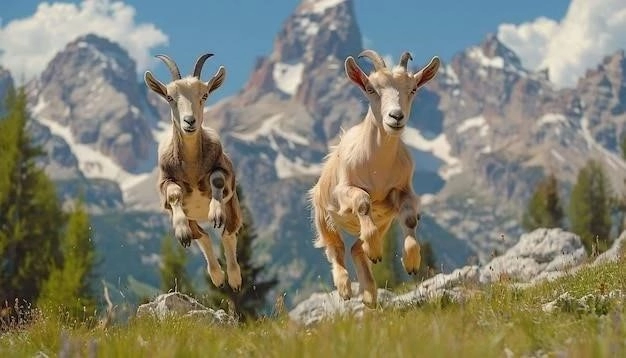
Adding to their striking appearance, markhors possess a black and white pattern on their legs, further enhancing their visual appeal and providing a stark contrast against their coat. Their faces, often framed by a long beard in males, are typically black, adding a touch of intensity to their gaze. The markhor’s agility is evident in its broad hooves, perfectly adapted for traversing the rocky slopes and cliffs of their mountainous habitats.
The world of markhors extends beyond a single, uniform appearance, encompassing a fascinating diversity reflected in its five distinct subspecies. Each subspecies, shaped by the environmental pressures of their specific geographic locations, exhibit unique characteristics that contribute to the overall splendor of this remarkable species. These subspecies include:
- Kashmir Markhor (Capra falconeri cashmiriensis): Native to the Kashmir region, this subspecies is recognized for its long, flowing hair and slightly looser horn spirals.
- Astor Markhor (Capra falconeri falconeri): Found in the Astor region of Pakistan, this subspecies is characterized by its tightly curled horns, often exhibiting a “flare-horned” appearance.
- Bukharan Markhor (Capra falconeri heptneri): This critically endangered subspecies, inhabiting the sparse landscapes of Tajikistan, Turkmenistan, and Uzbekistan, faces significant conservation challenges and is recognized for its smaller size and lighter coat.
- Sulaiman Markhor (Capra falconeri jerdoni): Found in the Sulaiman Mountains of Pakistan, this subspecies is distinguished by its relatively short, flat horns.
- Kabul Markhor (Capra falconeri megaceros): This endangered subspecies, residing in the Kabul region of Afghanistan, possesses large, tightly wound horns, often with a noticeable twist.
Each subspecies, while sharing the fundamental characteristics that define a markhor, stands as a testament to the remarkable adaptability and diversity within this captivating species. Their unique traits, honed by the forces of evolution, underscore the importance of conservation efforts to protect not only the markhor as a species but also the unique genetic heritage represented by each subspecies.
Habitat and Distribution
The markhor, a majestic symbol of the high mountains, has carved its niche in the rugged and unforgiving landscapes of Central and South Asia. Their range, a testament to their adaptability and resilience, spans across several countries, each offering unique ecological conditions that have shaped the evolution of this remarkable species. From the soaring heights of the Himalayas to the arid slopes of the Karakoram, the markhor has found its home in a tapestry of habitats, each playing a crucial role in its survival.
Pakistan, with its diverse array of mountainous terrain, holds the distinction of being a stronghold for the markhor, harboring a significant portion of their global population. Within Pakistan, the species finds refuge in the northern regions, including the provinces of Chitral, Ghizar, and Hunza, where rugged mountainscapes provide the ideal backdrop for their survival. Moving westward, the markhor’s range extends into the easternmost reaches of Afghanistan, navigating the challenging terrain of the Hindu Kush mountain range, a formidable natural barrier that has shaped the evolutionary trajectory of numerous species.
The markhor’s distribution extends beyond the political boundaries of Pakistan and Afghanistan, encompassing the northwestern regions of India, where the species seeks refuge in the high-altitude forests and grasslands of the Himalayan foothills. Further north, their range stretches into the heart of Central Asia, finding pockets of suitable habitat in the countries of Tajikistan, Turkmenistan, and Uzbekistan, where the species faces increasing pressure from human encroachment and habitat degradation.
Despite their adaptability, markhors exhibit specific habitat preferences, demonstrating a remarkable affinity for arid cliffside habitats within sparsely wooded mountainous regions. These rugged, seemingly inhospitable environments provide them with a sense of security, offering vantage points to survey their surroundings and evade potential predators. They thrive in the Middle Asian Mountains Temperate Forests, a unique ecoregion characterized by a mosaic of forests, shrublands, and grasslands, perfectly suited to their dietary needs and providing ample opportunities for foraging and seeking shelter.
While adept at navigating treacherous terrain, markhors exhibit an aversion to deep snow, often migrating to lower altitudes during the harsh winter months. This seasonal movement, a testament to their resilience and adaptability, underscores their sensitivity to environmental changes and highlights the importance of maintaining habitat connectivity to ensure their long-term survival.
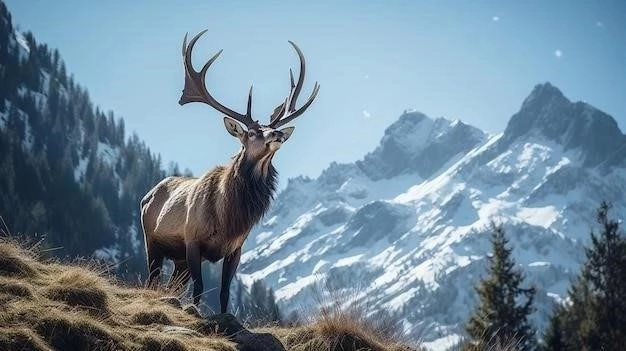
The Markhor’s Lifestyle
The markhor, an inhabitant of rugged mountain terrains, leads a life dictated by the rhythms of nature and the challenges of its high-altitude home. Their days are a delicate balance between foraging for sustenance, navigating treacherous slopes, and remaining vigilant against predators, all while contributing to the intricate web of life within their mountainous ecosystems. Their social structure, shaped by the demanding environment, reveals fascinating insights into their resilience and adaptability.
Diet and Foraging Habits
The markhor, a majestic herbivore inhabiting the rugged mountain landscapes of Central and South Asia, displays a remarkable adaptability in its dietary preferences, shaped by the seasonal variations and availability of food resources within its high-altitude domain. Their feeding habits, a delicate dance between grazing and browsing, reflect their intimate connection with the rhythms of their environment.
During the verdant spring and summer months, when the slopes come alive with lush vegetation, markhors transition into a primarily grazing lifestyle, their days a continuous cycle of foraging on the abundant grasses that carpet their mountainous home. Their diet consists of various grasses, including species like Cynodon dactylon, Poa pratensis, and Themeda spp., which provide essential nutrients to fuel their active lifestyles. Their grazing habits, often conducted in the cool hours of the early morning and late afternoon, are a testament to their ability to conserve energy during the hottest parts of the day.
As the seasons shift and the vibrant hues of summer fade into the golden hues of autumn, markhors undergo a subtle dietary transition, adapting to the changing landscape and the diminishing availability of fresh grasses. Their focus shifts from grazing to browsing, supplementing their diet with a diverse array of shrubs, herbs, and the tender twigs and leaves of trees such as Pistacia and evergreen oak. This flexible approach to foraging ensures their survival throughout the year, highlighting their resilience and adaptability to the cyclical nature of their environment.
The markhor’s foraging behavior is characterized by a keen sense of resourcefulness and an uncanny ability to access vegetation often beyond the reach of other herbivores. They have been observed standing on their hind legs, their impressive horns providing balance, to reach the tender leaves and shoots high in the trees, a testament to their agility and determination. Their daily foraging routines, often spanning 8 to 12 hours, are a testament to their commitment to extracting maximum sustenance from their surroundings, ensuring their survival in the often-challenging conditions of their high-altitude realm.
Social Behavior and Reproduction
The markhor, a magnificent denizen of the high mountains, exhibits intriguing social dynamics, shaped by the rugged terrain and the need to navigate the challenges of their environment. Their social structure, a tapestry woven with threads of solitary existence and temporary alliances, reflects a delicate balance between competition and cooperation, essential for their survival and the continuation of their lineage.
Male markhors, distinguished by their imposing size and majestic horns, often lead solitary lives, their interactions with others primarily limited to brief encounters during the breeding season. They are often seen roaming the slopes independently, their movements dictated by the availability of food and the need to establish and defend territories. Their solitary nature, a testament to their self-reliance and ability to thrive in challenging environments, reflects an adaptation to the often-limited resources of their high-altitude habitats.
Female markhors, in contrast to their solitary male counterparts, exhibit a more gregarious nature, forming tightly knit herds consisting of up to nine individuals, often comprising related females and their young. These herds, led by an experienced matriarch, provide a sense of security and shared responsibility, particularly in raising and protecting their vulnerable offspring. The bonds within these female-led groups are strong, fostering a sense of community and cooperation, essential for their survival in the often-unforgiving landscapes they call home.
As the seasons transition and the crisp air of autumn descends upon the mountains, a sense of anticipation fills the air, signaling the arrival of the markhor’s breeding season, a time of intense competition and courtship rituals. Male markhors, driven by instinct, descend from their solitary existence, their presence heralding the start of a dramatic period marked by displays of strength and dominance. They engage in fierce battles, their imposing horns clashing in a spectacle of raw power, to establish dominance and win the right to mate with receptive females.
Following a gestation period of 135 to 170 days, female markhors give birth to one or two kids, ushering in a new generation into the challenges and triumphs of life in the high mountains. These kids, born with an innate ability to navigate their treacherous surroundings, rely on the protection and guidance of their mothers and the collective strength of the herd for survival. As they mature, they gradually integrate into the social fabric of the herd, learning the essential skills for survival and perpetuating the legacy of the markhor.
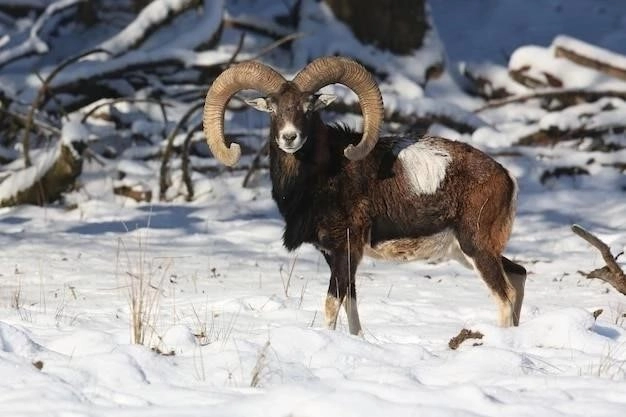
Threats and Conservation Status
The markhor, a symbol of resilience and adaptability, faces an uncertain future, its existence threatened by a complex interplay of human activities and environmental changes. Despite their remarkable ability to thrive in challenging landscapes, markhor populations have experienced concerning declines, prompting conservationists to raise alarms and implement strategies to safeguard this iconic species from the brink of extinction.
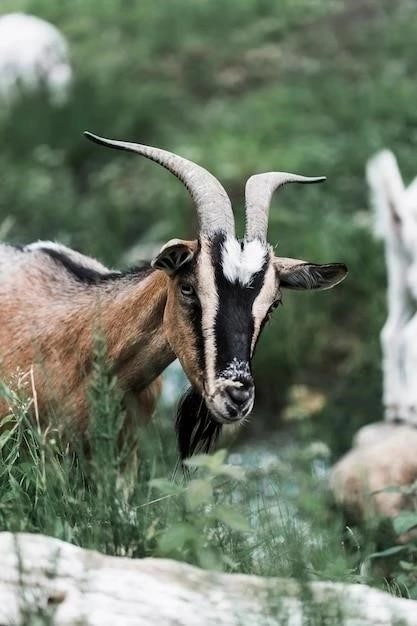
Habitat Loss and Degradation
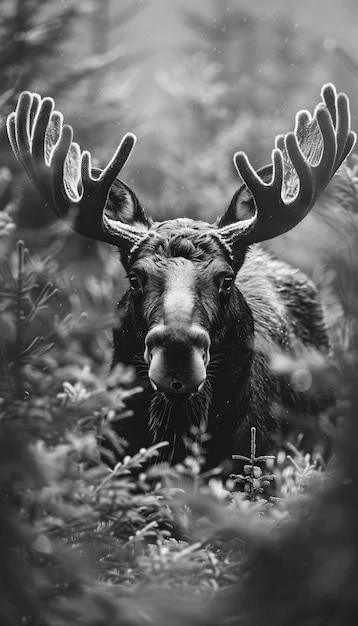
The markhor, a majestic inhabitant of high-altitude ecosystems, faces an increasingly uncertain future as habitat loss and degradation cast a shadow over its mountainous domain. The intricate tapestry of forests, shrublands, and grasslands that constitute their home is being relentlessly altered by human activities, eroding the very foundation of their survival.
Deforestation, driven by the insatiable demand for timber, fuelwood, and agricultural expansion, stands as a primary threat to markhor populations across their range. The once-vast expanses of forests, providing essential refuge and sustenance, are being fragmented into isolated patches, disrupting movement corridors, and increasing vulnerability to predation. The loss of tree cover, a critical component of their habitat, exposes them to harsh weather conditions, reduces the availability of food and shelter, and disrupts the delicate balance of the ecosystem.
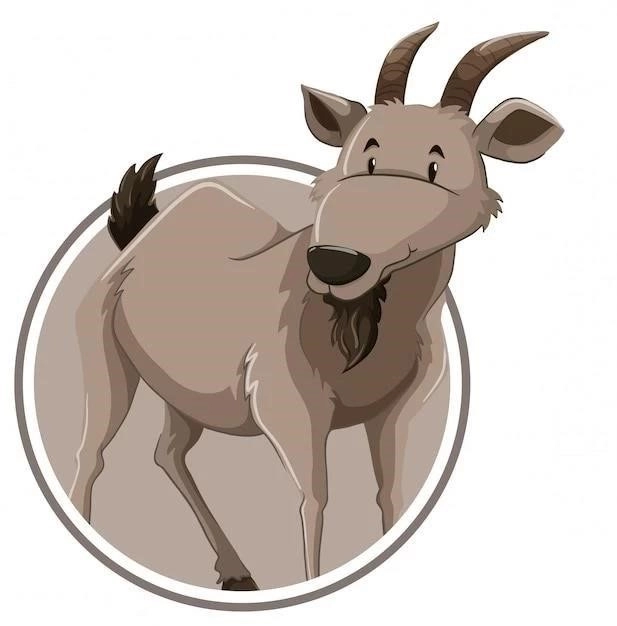
As human populations expand and the demand for resources intensifies, markhors face increasing competition from domestic livestock for limited grazing lands. Overgrazing by livestock, a consequence of unsustainable land management practices, leads to the depletion of essential forage species, leaving markhors with diminished food resources and forcing them to venture into marginal habitats, further increasing their vulnerability. The presence of livestock also introduces the risk of disease transmission, posing an additional threat to the health of markhor populations.
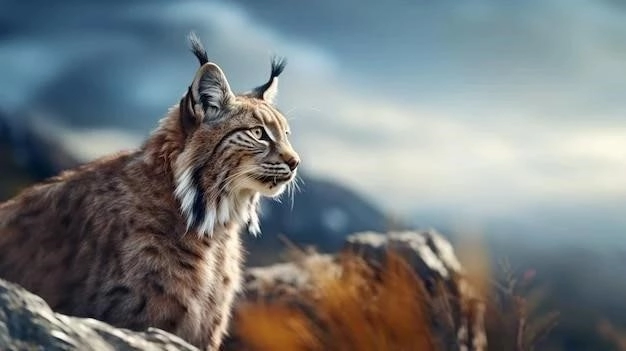
The encroachment of human settlements into markhor habitats further exacerbates the challenges they face. The construction of roads, infrastructure development, and the expansion of agriculture fragment their habitat, restrict their movements, and increase the likelihood of human-wildlife conflicts. As human activities continue to encroach upon their mountainous refuge, markhors are being squeezed into smaller, isolated pockets, jeopardizing their long-term survival.
The degradation of markhor habitat is not merely a consequence of direct human activities but also a result of broader environmental changes, such as climate change. The warming climate, characterized by unpredictable weather patterns and shifts in vegetation zones, poses additional challenges for these mountain-dwelling ungulates. As temperatures rise, suitable markhor habitat is predicted to shift upward in elevation, potentially reducing the overall area available to them and forcing them into competition with other species for limited resources.
Hunting and Human-Wildlife Conflict
The markhor, a majestic inhabitant of the high mountains, faces mounting threats from human activities, with hunting and human-wildlife conflict casting a long shadow over its continued existence. The pursuit of this iconic species, driven by a complex interplay of cultural, economic, and social factors, poses significant challenges to its conservation, demanding nuanced and multifaceted solutions.
Illegal hunting, fueled by the demand for their impressive horns, meat, and other body parts, remains a persistent threat to markhor populations. Their magnificent spiral horns, a symbol of strength and beauty, are highly prized as trophies, fetching exorbitant prices on the black market, particularly in regions where traditional medicine attributes medicinal properties to them. This illicit trade, driven by greed and disregard for conservation efforts, undermines population recovery and perpetuates the cycle of exploitation.
Beyond the immediate threat of poaching, human-wildlife conflict, often stemming from competition for resources and space, presents additional challenges to markhor conservation. As human populations expand into their mountainous habitats, markhors are increasingly perceived as competitors for grazing lands and agricultural crops. This perception, coupled with limited awareness of their ecological importance, can lead to retaliatory killings, further diminishing their numbers and exacerbating the conflict.
The presence of livestock in markhor habitats can escalate the potential for conflict, as both species rely on similar food sources and grazing areas. This competition for limited resources can lead to tensions between local communities and conservation efforts, highlighting the need for integrated approaches that address both human livelihoods and wildlife conservation.
Addressing the complex issue of human-wildlife conflict requires a multi-pronged approach that involves raising awareness among local communities about the importance of markhor conservation, promoting tolerance for their presence, and providing alternative livelihood opportunities that reduce reliance on activities detrimental to wildlife. Implementing community-based conservation programs, where local stakeholders are actively involved in monitoring and protecting markhor populations, can foster a sense of ownership and stewardship, paving the way for long-term coexistence.










